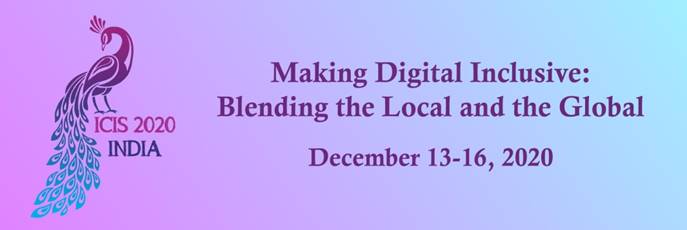Sharing Economy, Platforms and Crowds
Loading...
Paper Type
Short
Paper Number
1873
Description
Consumers interact with reputation signals such as star ratings in many online environments. Reputation portability has been proposed as an emerging application to leverage said signals across platform boundaries. While first research demonstrates the general trust building potential of portable reputation, the cognitive and economic effects of simultaneously available signals from different sources – especially when the information is conflicting – have thus far received only little research attention. In this study, we address the gap, using a multi method approach. First, we assess the impact of rating discrepancy on consumer purchase intentions by means of an online experiment. We find that imported ratings are a driver of purchase intentions on digital platforms, but, also that a higher rating discrepancy is detrimental. Second, we propose a study design to analyze the underlying cognitive processes that may contribute to explain consumers’ decision making in the presence of discrepant signals using eye-tracking.
Recommended Citation
Hesse, Maik; Lutz, Otto Hans-Martin; Adam, Marc; and Teubner, Timm, "Gazing at the Stars: How Signal Discrepancy Affects Purchase Intentions and Cognition" (2020). ICIS 2020 Proceedings. 8.
https://aisel.aisnet.org/icis2020/sharing_economy/sharing_economy/8
Gazing at the Stars: How Signal Discrepancy Affects Purchase Intentions and Cognition
Consumers interact with reputation signals such as star ratings in many online environments. Reputation portability has been proposed as an emerging application to leverage said signals across platform boundaries. While first research demonstrates the general trust building potential of portable reputation, the cognitive and economic effects of simultaneously available signals from different sources – especially when the information is conflicting – have thus far received only little research attention. In this study, we address the gap, using a multi method approach. First, we assess the impact of rating discrepancy on consumer purchase intentions by means of an online experiment. We find that imported ratings are a driver of purchase intentions on digital platforms, but, also that a higher rating discrepancy is detrimental. Second, we propose a study design to analyze the underlying cognitive processes that may contribute to explain consumers’ decision making in the presence of discrepant signals using eye-tracking.
When commenting on articles, please be friendly, welcoming, respectful and abide by the AIS eLibrary Discussion Thread Code of Conduct posted here.



